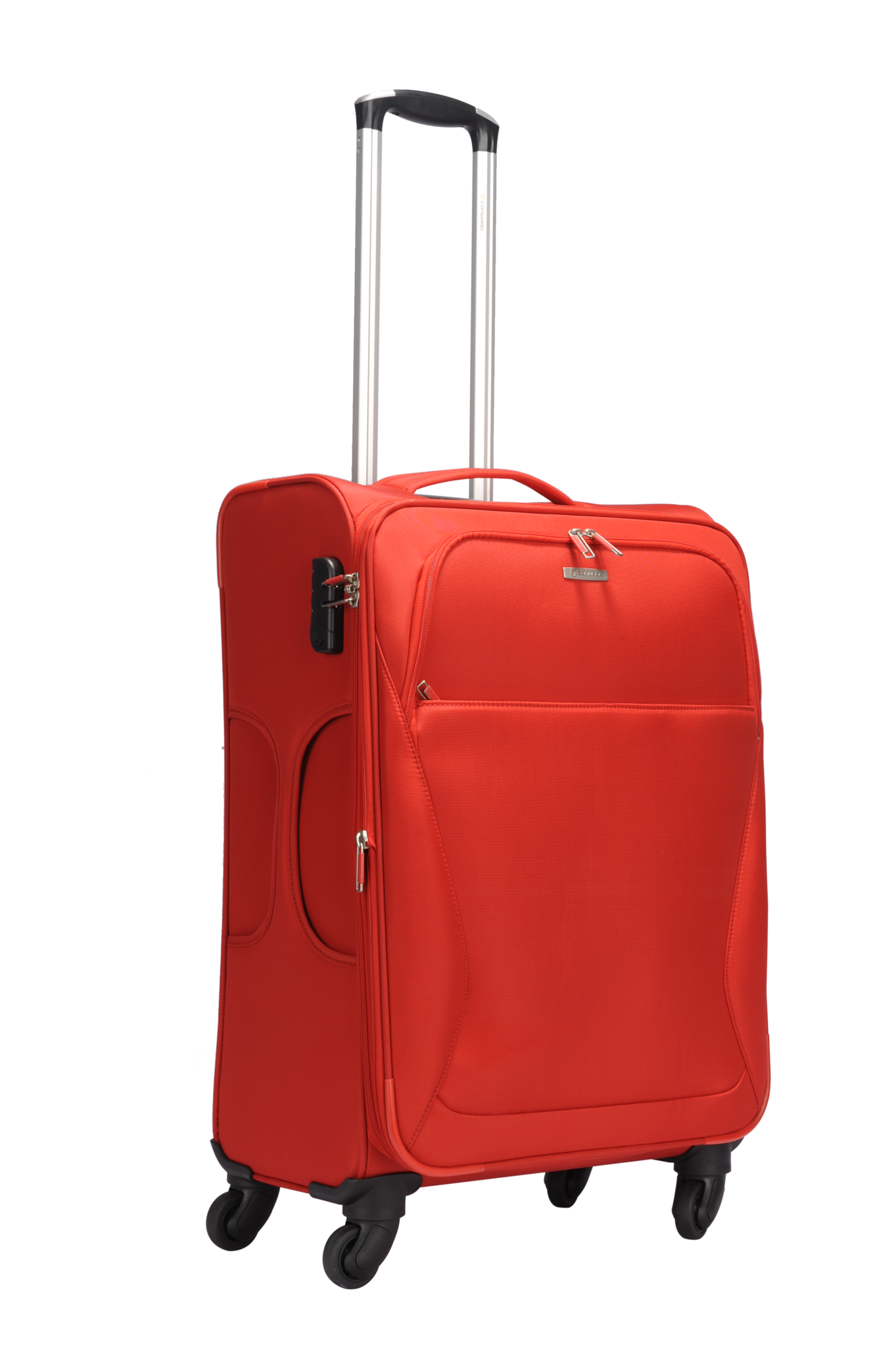
This image has format transparent PNG with resolution 1363x2048.
You can download this image in best resolution from this page and use it for design and web design.
Baggage, trolley bag PNG with transparent background you can download for free, just click on download button.
Baggage or luggage consists of bags, cases, and containers which hold a traveller's personal articles while the traveler is in transit. A modern traveller can be expected to have packages containing clothing, toiletries, small possessions, trip necessities. On the return trip, travelers may have souvenirs and gifts. For some people, luggage and the style thereof is representative of the owner's wealth and status. Luggage is constructed to protect the items during travel, either with a hard shell or a durable soft material. Luggage often has internal subdivisions or sections to aid in securing items. Handles are typically provided to facilitate carrying, and some luggage may have wheels and/or telescoping handles or leashes to make moving them easier.
Baggage (not luggage), or baggage train, can also refer to the train of people and goods, both military and of a personal nature, which commonly followed pre-modern armies on campaign.
Luggage carriers – light-weight wheeled carts or harnesses on which luggage could be temporarily placed or that can be temporarily attached to luggage – date at least to the 1930s, such as in US patent 2,132,316 "Luggage carrier" by Anne W. Newton (filed 1937, published 1938). These were refined over the following decades, as reflected in patents such as a 1948 US patent by Herbert Ernest Mingo, for a "device for the handling of trunks, suitcases, and the like".
A US patent for a "luggage carriage" filed in 1949 (and published 1953), and another for a "luggage carriage harness", were both made by Kent R. Costikyan. However, the wheels were external to the suitcases. Patents had been published for wheeled luggage – a wheeled trunk in 1887, and a wheeled suitcase in 1945 – but these were not successfully commercialized.
The first commercially successful rolling suitcase was invented in 1970, when Bernard D. Sadow applied for a patent that was granted in 1972 as United States patent 3,653,474 for "Rolling Luggage". The patent application cited the increase in air travel, and "baggage handling [having] become perhaps the single biggest difficulty encountered by an air passenger", as background of the invention. Sadow's four-wheeled suitcases, pulled using a loose strap, were later surpassed in popularity by suitcases that feature two wheels and are pulled in an upright position using a long handle.
These were invented in 1987 by US pilot Robert Plath, and initially sold to crew members. Plath later commercialized them, after travelers became interested after seeing them in use by crew members, and founded the Travelpro company, which marketing the suitcases under the trademark "Rollaboard". The terms rollaboard and roll-aboard are used generically, however. While initially designed for carry-on use (to navigate through a large terminal), as implied by the analogous name, similar designs are also used for checked baggage.
More recently, four-wheeled luggage with casters has become popular, notably since their use by Samsonite in the 2004 version of their signature Silhouette line. These are otherwise similar in design to two-wheel roll-aboards, with a vertical orientation and a retracting handle, but are designed to be pushed beside or in front of the traveler, rather than pulled behind them. These are often referred to as "spinner" luggage, since they can spin about their vertical axis.
Sadow attributes the late invention of luggage on wheels to a "macho thing" where "men would not accept suitcases with wheels". Others attribute the late invention to "the abundance of luggage porters with carts in the 1960s, the ease of curbside drop-offs at much smaller airports and the heavy iron casters then available."
In this page you can download free PNG images: Baggage, trolley bag PNG images